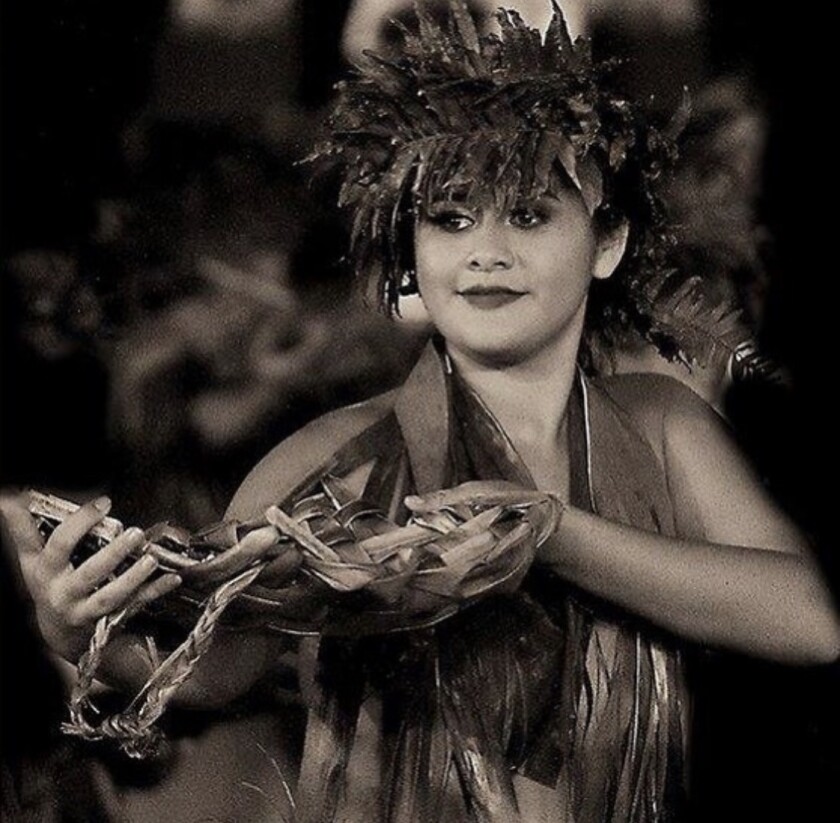
When describing the Heiva Festival in one word, Johann Faana-Kong and Junior Pedron both said “culture.” Faana-Kong continued, “It truly does represent Tahiti culture in all ways. From the dancing, the Orero [a traditional Polynesian monologue], the food and the focus on family and friend time, it feels very Tahiti.”
Tahiti’s Heiva celebration spans from late-June to mid-August and was formerly known as Tiurai, according to the official Heiva website. Faana-Kong, a freshman from Tahiti majoring in political science, said he has many fond memories of celebrating Heiva growing up in Tahiti. “Everyone gathers together in groups and has traditional dances.”
Pedron, a junior from Tahiti majoring in graphic design, added that while the Heiva celebration focuses more on the culture and dancing, there is also a fun festival, now referred to as Tiurai, during this same time of year.
Of Tiurai, Faana-Kong said, “During this month, many portable roller-coasters are set up for the children to enjoy.” Rather than the festivities being locked into a few specific dates, families and friends tend to “pick a time where everyone is free and someone close to you is going to be performing a dance or monologue.”
Competitions and costumes
While many people celebrate with their family and communities throughout the month of July, Pedron explained a key part of Heiva is the competitions that take place. “During the Heiva, schools and Tahitian dance clubs present different performances and compete in several categories. For example, best group, best solo male, best solo female, best Orero [traditional monologue], best percussion band and more.”
Tekarohi Dexter, a senior majoring in hospitality & tourism management from Tahiti, who competed in the 2019 Heiva Dance Competition, explained there are two main categories of dance within the competition: Ote‘a, which is fast-paced, and ‘Aparima, which is slower.
Faana-Kong shared during the dances, performers wear traditional floral, tropically-designed costumes and headpieces. Dexter said the design of the costumes are based on the team dancing and what is being represented through the dance.
Pedron explained each dancer makes their own costume using “anything they can find in nature.” Dexter explained when watching the performances, the audience will mainly see tea leaves, some still green and others dried, plumerias, large red flowers, fruits and any vegetation they can use. She said for the more traditional dress, they also make the costumes using fabrics.
“Depending on the team, you use the leaves from a different area on the island. We can pick the leaves from the island itself. That is more powerful for us because it comes with the mana of the story we are telling.”
Forbidden culture and food favorites
Additionally, as part of the celebration, people gather and listen to a form of traditional Polynesian monologues called Orero. Faana-Kong explained, “The Orero aren’t quite plays, but they’re more interesting than someone just talking to everyone.”
Additionally, Pedron said Oreros are like an oral presentation. “It was the way our ancestors would share tales and legends or talk about extraordinary accomplishments of a king or warrior.” Pedron added the Orero is also used to introduce a dance or performance.
Dexter said from the time Tahiti was colonized by European missionaries, anything related to the Tahitian culture was forbidden. She said, “They forbid our culture, language, dances, shows. When we got our independence, we brought back the cultural practices.”
While many aspects of Tahitian culture were reinstated, one aspect of culture still remains broken: The Tahitian language, Faana-Kong shared. He said, “Sadly most of the younger kids don’t speak Tahitian, although they can understand it. France’s influence has changed Heiva in many ways.” Faana-Kong said Tahitian is used a lot more often during Heiva, which helps combat the modern westernization of Tahiti.
Because Tahiti is located in the Southern Hemisphere, July is the coolest month of the year with the average highest temperature being 82 degrees Fahrenheit, according to a weather and climate website. Faana-Kong said this makes it a very refreshing time to enjoy the outdoors through meals and dance.
One influence from France that remains a part of Heiva is the food eaten during the celebration. Faana-Kong said one of the most popular dishes is steak frites. “Steak frites are so good! Ah, now I want some.” Faana-Kong explained what steak frites are, “They’re steak and fries on a plate or in a bowl, but what makes them really special is the Roquefort sauce [a type of blue cheese]. It’s white and made from cheese.” Additionally, he said, “If you don’t like steak, or if we don’t have any, we often use fish instead.” Faana-Kong strongly recommended others try the steak frites.
Excited to celebrate Heiva again when he returns home, Faana-Kong said, “Foreigners are so welcome to come! We love to celebrate and introduce our culture to others, and if you come, people will treat you very warmly.” •
